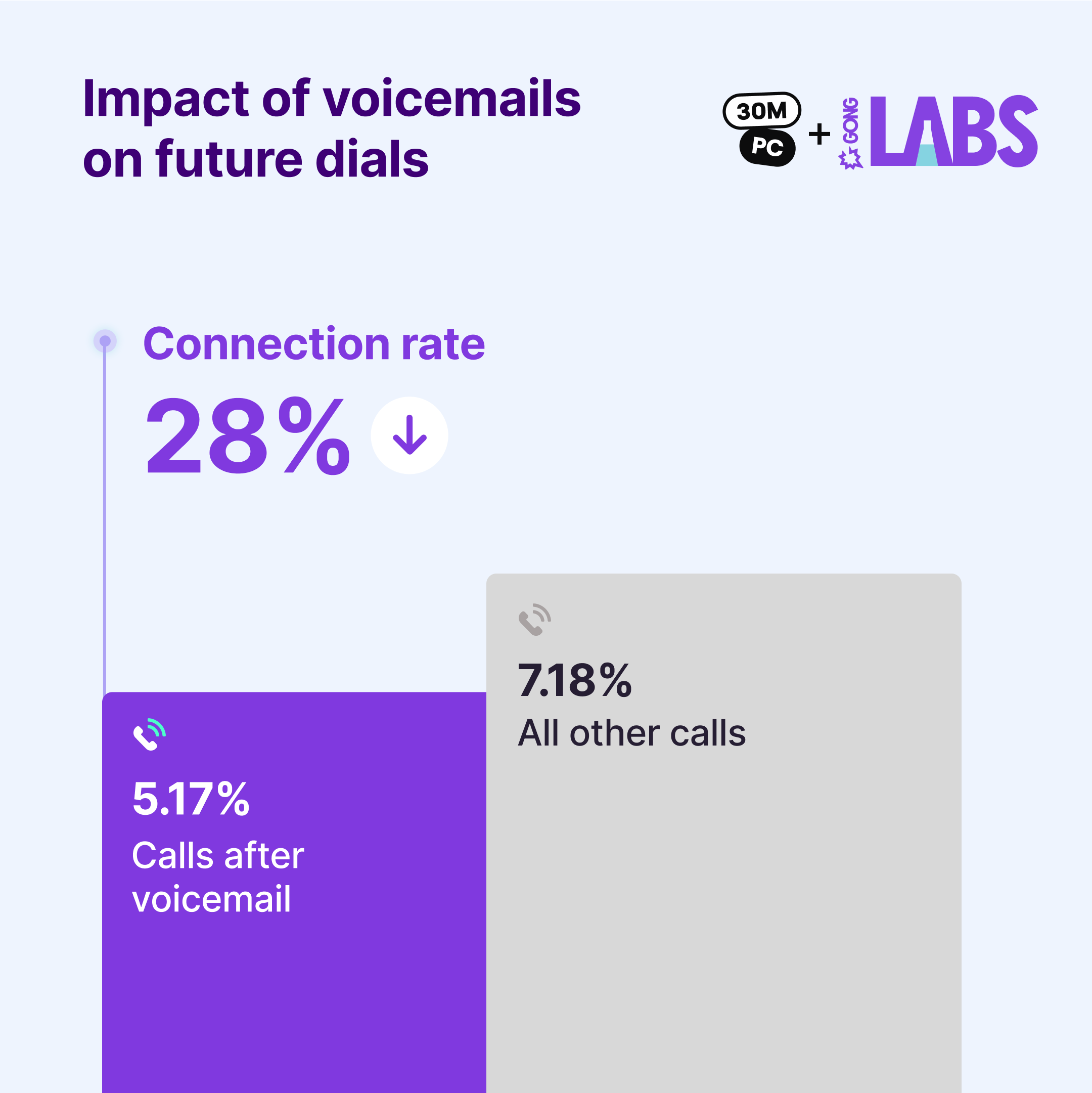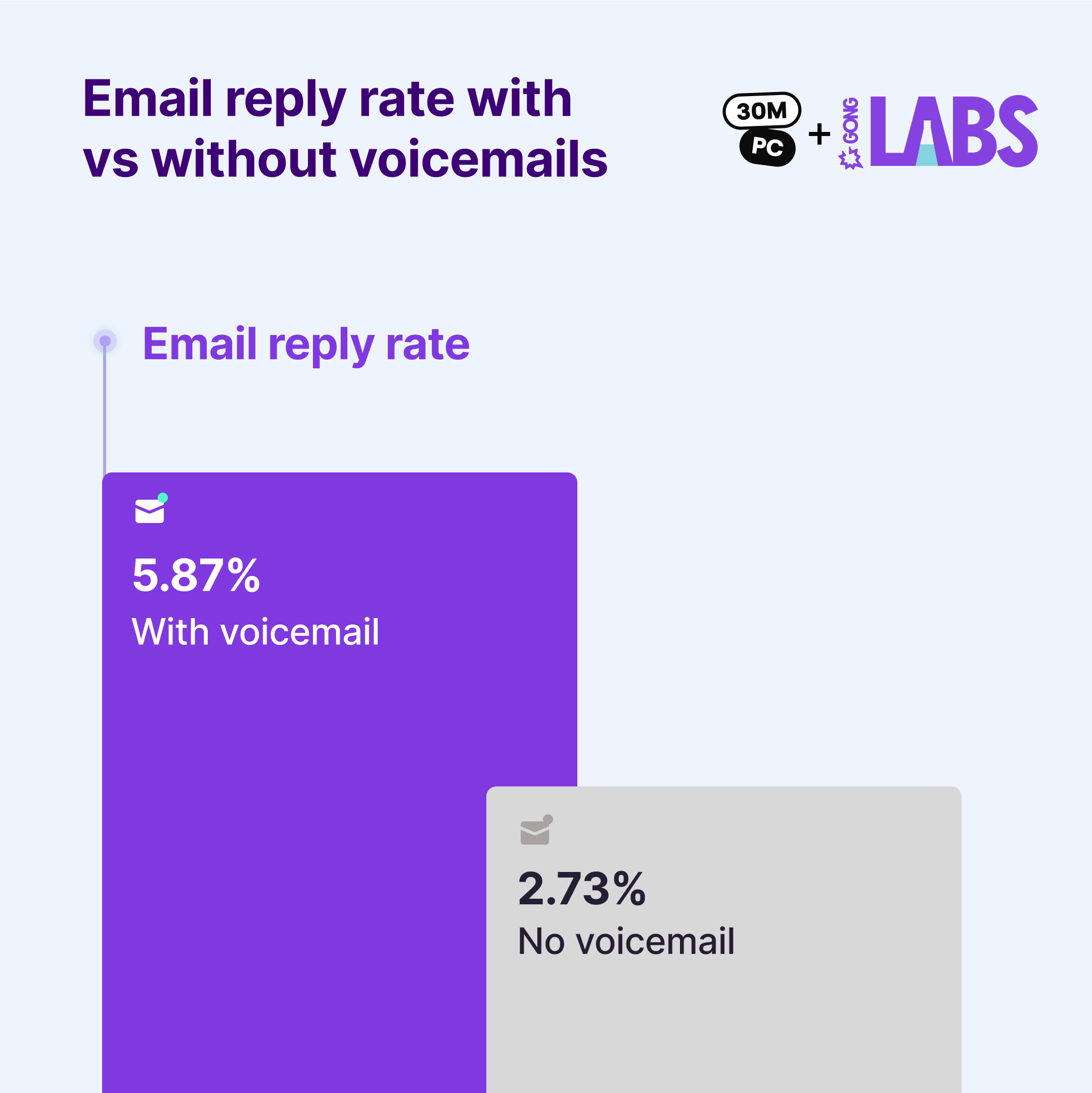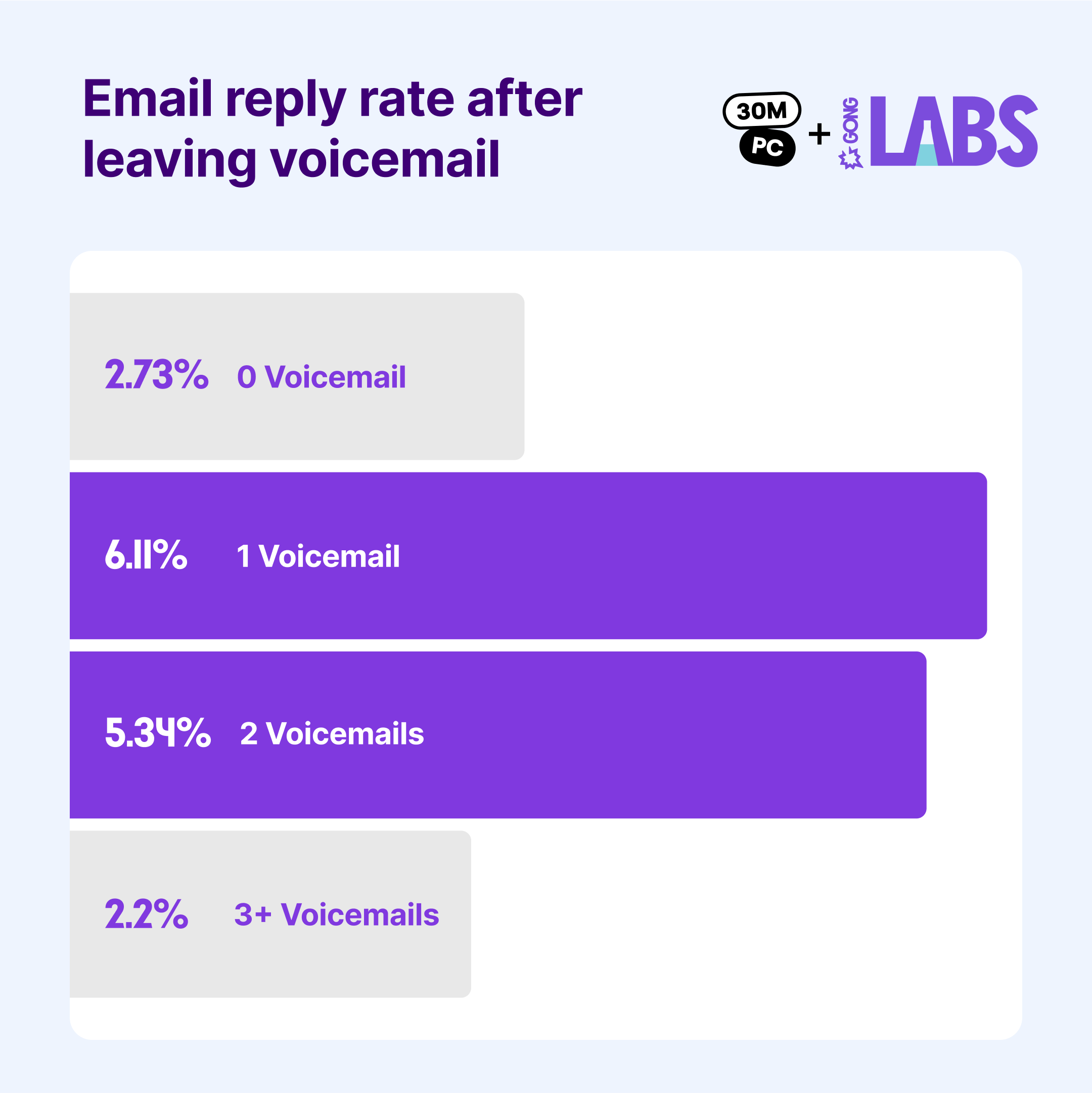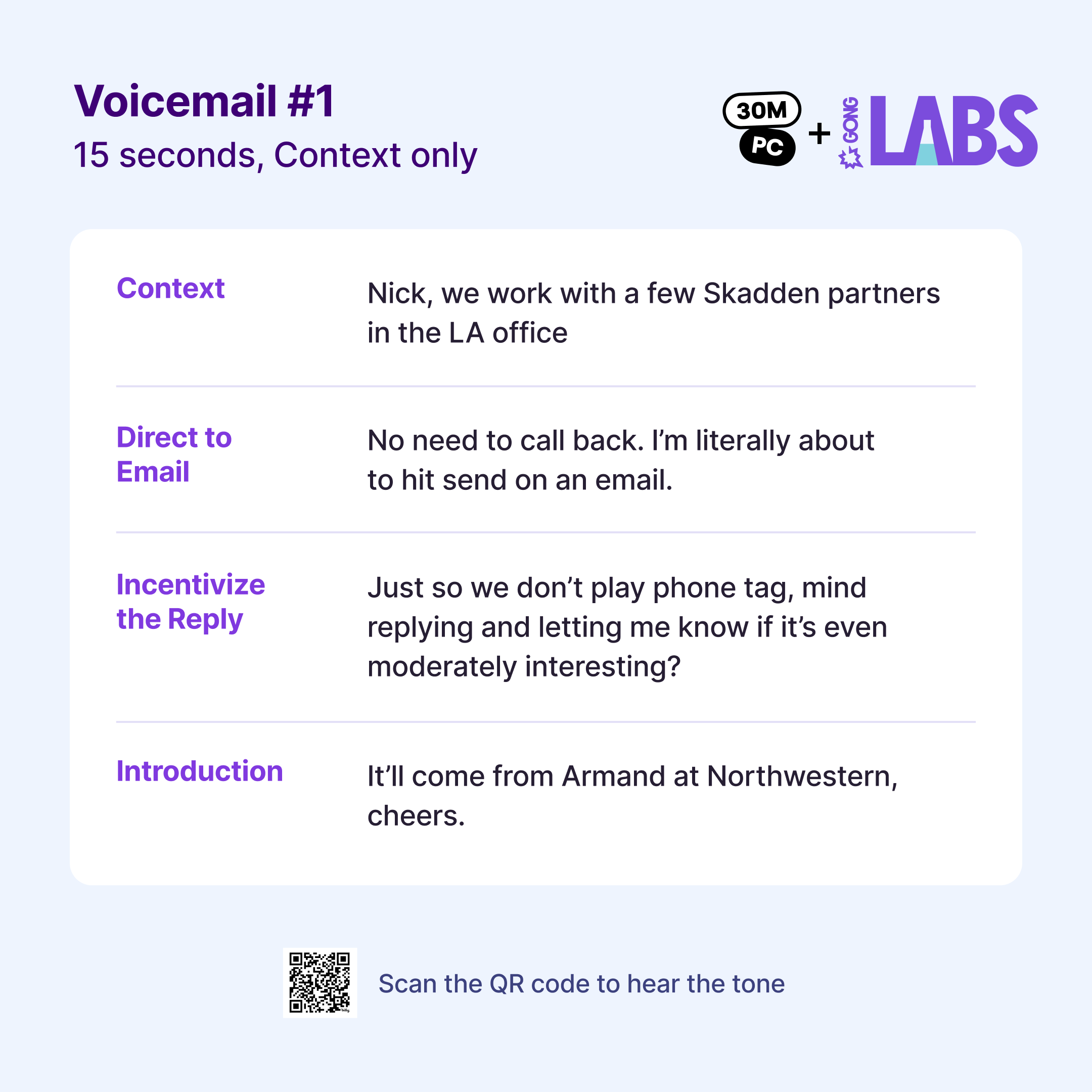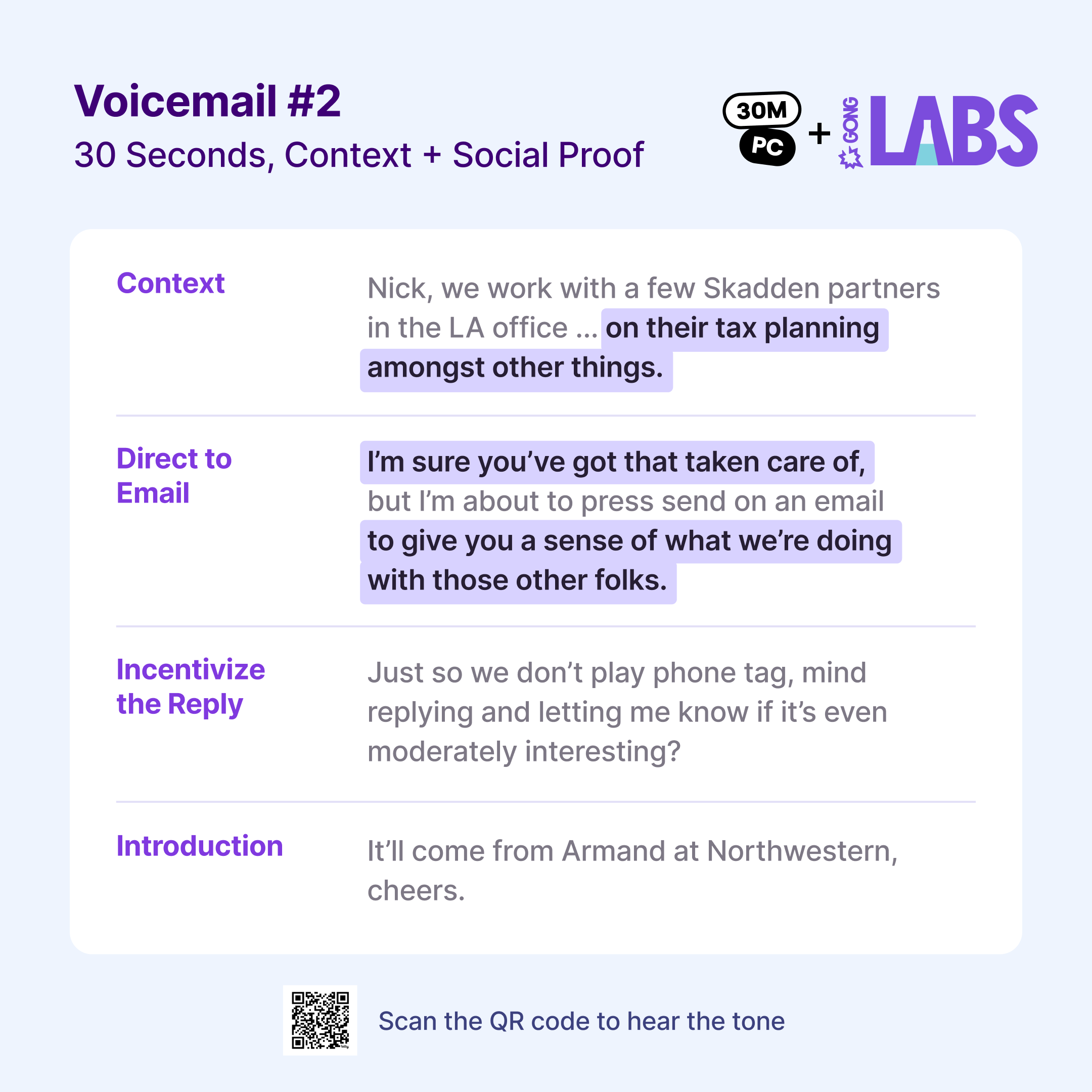Should you leave voicemails when cold calling? Here’s what the data says

This article is part of a special Gong Labs x 30 Minutes to President’s Club cold calling series in celebration of our book release: Cold Calling Sucks (And That’s Why It Works). If you like this, get your copy of the book here and subscribe to Gong Labs or 30MPC for more data-backed sales tips.
I recently Googled “Should you leave voicemails when cold calling?”
Half of the posts said yes. Half of the posts said no.
Unfortunately, none of them cited a single reliable data point.
So the Gong Labs team got to work and analyzed 300M+ cold calls to answer the question: should you leave a voicemail when cold calling (and if so, how?).
It’s time to settle this debate once and for all.
Should you leave voicemails at all?
To answer this question, we’ll first examine the case against leaving voicemails, which admittedly is quite strong.
True or False?
- Prospects never call back. It’s partly true. You’ll rarely get a callback.
- Voicemails take too much time. It’s true. In the time it takes to leave a voicemails, you can make 25% more cold calls.
- Voicemails reduce your future connect rate by 28%. It’s true. Gong data shows that voicemails reveal you’re a salesperson and reduce your connect rate on all future dials (5.17% after VMs, 7.18% with voicemails).
You’re probably thinking, “Alright, case closed.” The data validates every stance against leaving a voicemail listed above, but one key counterpoint revealed across 300M calls is why we ultimately recommend leaving a voicemail.
The goal of a voicemail isn’t to get a callback. It’s to get a reply over email.
Leaving a voicemail double your email reply rate
In 2024, engaging buyers across multiple channels is more critical than ever. This means reaching out to buyers via phone, email, chat, SMS, social, and more. While you might rely heavily on a channel that your typical buyer prefers, data shows the impact that using two or more engagement channels can have.
Gong data shows that leaving voicemails increases your email reply rate from 2.73% to 5.87%.
Simply put, if you engage your contact via both phone and email, you’ll more than double your chances of getting a reply.
In addition to this data-backed case to boost your reply rates:
- You get to an answer faster. The reality is that some people will never pick up a cold call, and most people aren’t interested in what you’re selling. You’ll get plenty of yeses from those emails, but you’ll also get the nos quicker, saving you time and energy.
- You can still maintain your connect rate by rotating your numbers. This allows you to capture the benefit of voicemails without worrying about hurting your future dials.
Based on the above, we recommend leaving voicemails to maximize your email reply rate, but there is a strategic and intentional approach you should take.
We’ll break that down and give you an example of what it looks like.
How to leave voicemails that drive email replies
Our approach to voicemails includes key components that help us counter the arguments against leaving them:
- Lead with context. Use something about them to pique their interest, then leave the pitch for the email. The moment you sell in the voicemail, they’ll delete it.
- Direct back to the email. Never ask them to call you back. Direct every ounce of attention to one thing: look for our email.
- Keep voicemails really, really short. No one listens to a 2-minute voicemail, and it’s a waste of your time to leave anything longer than 30 seconds.
Lastly, we’ll only leave two voicemails in what we call “Double Tap Voicemails.”
Why two?
Gong data shows email reply rates double when you leave one or two voicemails, but that’s where the data tells us to stop.
After leaving three or more voicemails your email reply rate drops to a measly 2.2%, lower than if you hadn’t left a voicemail at all (2.73%).
Here’s what those two voicemails should sound like.
Voicemail #1: 15 seconds, context only
Your first voicemail will be 15 seconds long and context-only. Lead with the most important piece of context you have, then save the entire pitch for the email.
Here’s what that sounds like (scan the QR to hear the tone):
Voicemail #2: 30 seconds, context + social proof
If the context-only approach doesn’t work the first time, we’ll use social proof for voicemail 2 to provide just a bit more context.
But again, no pitch. Explain how you work with their peers, then leave the details for the email.
See the changes to voicemail 1 that add on to voicemail 2 below (scan QR again to hear the tone):
The final verdict?
Leave up to two voicemails, but do so with the purpose of engaging your buyer via email.
In our latest guide, we’ve distilled all of the lessons learned from the 300M cold calls we analyzed and put them in one place. Our latest guide, “How to master cold calls” reveals:
- The answer to everyone’s question: Does cold calling still work?
- How to nail your opener and pitch, every time.
- The most common objections and how to navigate them.
- Best practices and insights to maximize your connect rate.
Give these data-backed tactics a try the next time you pick up the phone. It’s all free and for the taking here.

